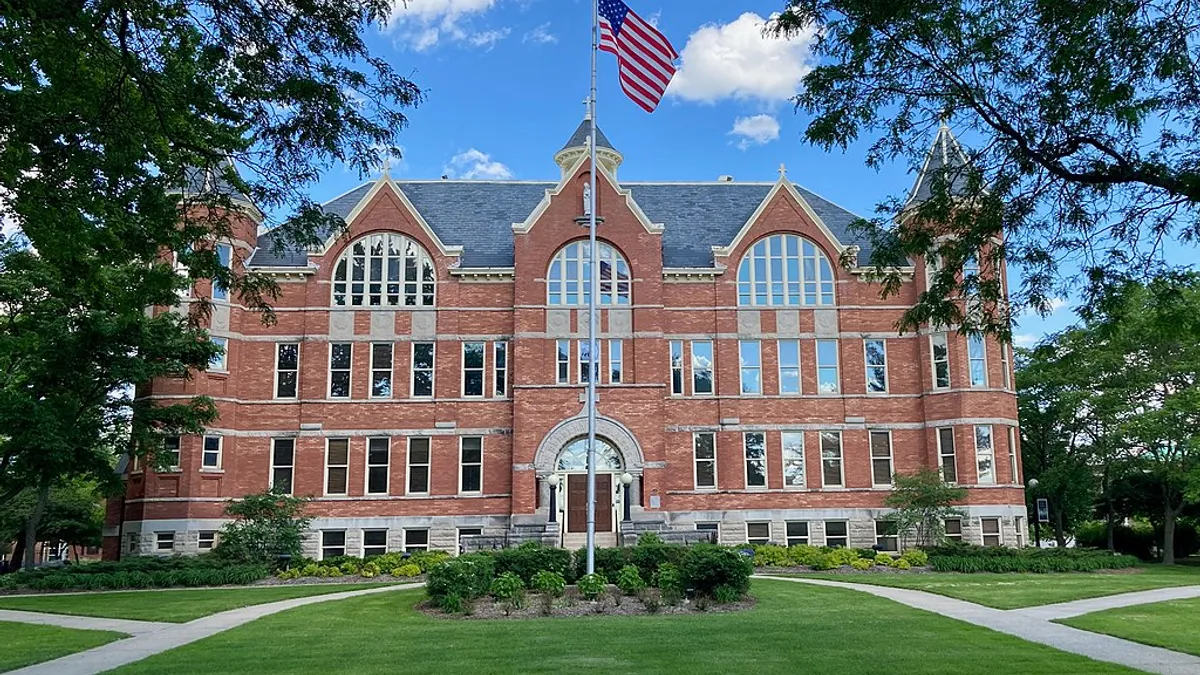Dive Brief:
- Earning a bachelor's degree reliably gives workers an economic boost, but their fields of study dramatically influence their earnings potential, according to new data released Thursday by Georgetown University’s Center on Education and the Workforce.
- Workers ages 25 to 54 with STEM degrees earn a median of $98,000 a year, in 2024 dollars. However, median earnings in those fields range from $64,000 for a bachelor’s degree in miscellaneous agriculture to $146,000 for a bachelor’s in petroleum engineering — the most of any major studied in the report.
- Salaries varied less among arts and humanities majors, ranging from $58,000 for studio arts majors to $73,000 for history majors. The median income across the group is $69,000, though nearly three-fourths of arts and humanities majors earned median salaries above $65,000, the report found.
Dive Insight:
Workers with a bachelor's degree earn a median annual salary of $81,000, compared to $47,000 for those with only a high school diploma or a GED, according to Georgetown CEW. But for many, the high cost of higher education has made them question whether it's still financially worthwhile to pursue a college degree.
Thursday's report also noted a modern anomaly has further skewed that equation — since 2022, recent college graduates have faced higher unemployment levels than workers across all educational levels.
The overall unemployment rate among bachelor's degree holders ages 22 to 26 is 5.3%, , the report said. That's compared to 2.9% of prime-age workers — those ages 25 to 54 — with the same level of education.
Some fields traditionally viewed as a safe bet for students seeking reliable, lucrative work, such as computer science, statistics and mathematics, face an even higher unemployment rate of 6.8%, the highest among STEM majors.
Between 2009 and 2023, the number of students studying those three majors ballooned by 159%, Ban Cheah, senior economist at Georgetown CEW and co-author of the report, said in a statement.
But Cheah said if they land a job, the positions tend to pay well — a median of $79,000 a year and $107,000 for those at the 75th percentile.
"This illustrates that high unemployment does not always go hand-in-hand with low earnings — and vice versa," he said.
Indeed, workers who hold bachelor's degrees in fields with critical shortages, such as healthcare and education, have relatively low levels of unemployment when they graduate. But CEW found those two groups of degreeholders consistently earn less than their counterparts employed in STEM. Recent graduates with a bachelor's degree in healthcare earn a median of $60,000 a year compared to $82,000 for prime-age workers.
Bachelor's degree holders in education and public service, one of the least lucrative fields researchers analyzed, had lower starting salaries and less economic growth on average. Recent graduates in the field earned a median of $46,000, and the figure only went up to $58,000 for prime-age workers.
By comparison, recent graduates with degrees in the arts and humanities had lower starting salaries, with a median of $45,000, but rocketed past those in education to earn a median of $69,000 for the bulk of their working lives.
Georgetown CEW advised prospective and current college students to consider if their undergraduate majors will require them to earn a graduate degree "in order to advance in their careers and realize their full earnings potential."
College graduates who studied the social sciences, for example, see a 34% jump in their earnings after completing a graduate degree. Those with bachelor’s degrees in education and public service see a 32% earnings increase.
Furthermore, some majors are specifically meant to be stepping stones on a longer postsecondary journey.
Workers with health and medical preparatory bachelor's degrees — programs designed to prepare students for professional health programs, such as medical or dental school — earn a median of $70,000. Those who also hold a graduate degree earn a median of $152,000.
Just 1% of all workers have a health and medical preparatory bachelor’s degree, but among them, 77% also have a graduate degree.












